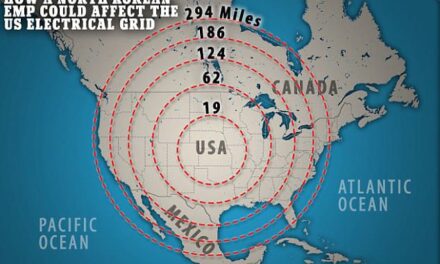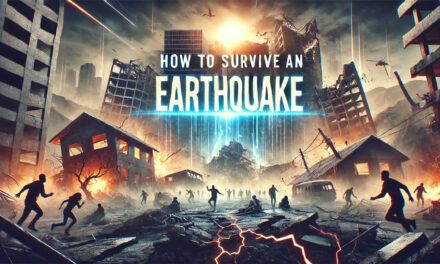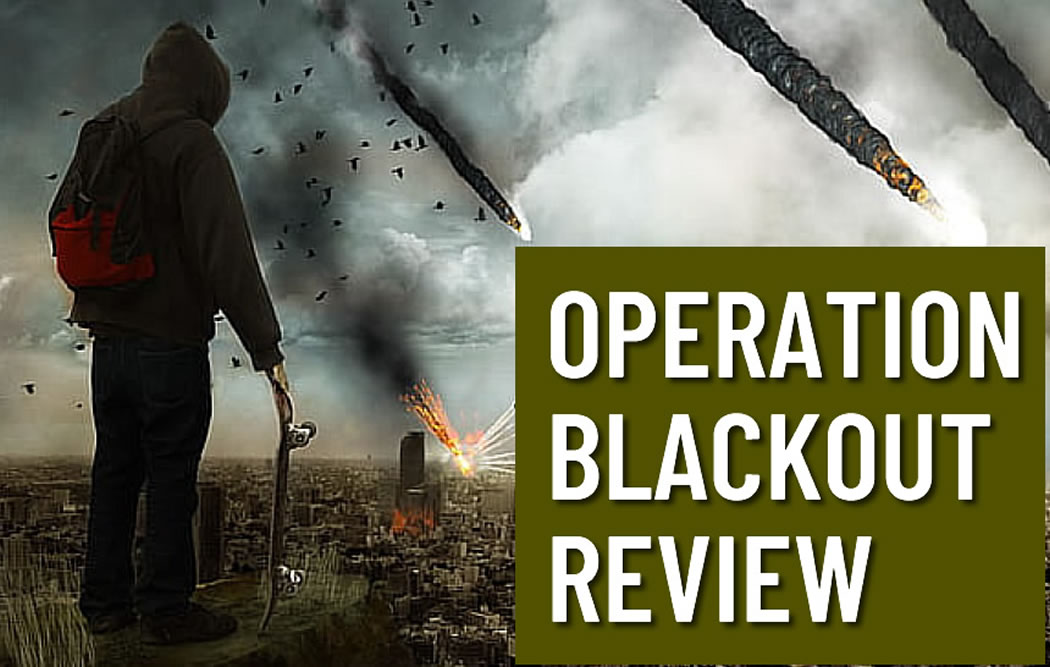TL;DR: Nuclear survival depends on understanding the critical relationship between bunker depth and radiation protection. While federal agencies recommend a minimum of 10 feet underground for basic fallout protection, experienced shelter builders and military specifications suggest 30-50 feet provides optimal civilian protection against both gamma radiation and blast effects. The physics is straightforward: earth acts as a natural shield, with every 9 centimeters of packed soil cutting gamma radiation exposure in half. How deep should a nuclear bunker be ultimately depends on weapon yield, proximity to potential targets, and whether you’re protecting against tactical strikes or strategic nuclear exchange scenarios. Modern threats from hostile nations with advanced delivery systems demand serious underground preparation—not government platitudes about civil defense. Professional shelter systems can be installed at depths exceeding 40 feet, providing families with genuine protection when nuclear threats become reality.
American families face threats our grandparents never imagined. Nuclear proliferation spreads to hostile nations while domestic infrastructure crumbles under incompetent leadership. Government “experts” offer platitudes about civil defense while maintaining private bunkers for themselves and their cronies. When nuclear threats become reality, your survival depends on understanding the hard science of radiation protection—not bureaucratic wishful thinking.

How deep does a fallout shelter need to be? This question determines whether your family survives nuclear war or becomes another tragic statistic. Understanding the physics of radiation shielding, blast effects, and underground construction could mean the difference between walking away from Armageddon or vaporizing in the first microseconds.
The federal government’s civil defense recommendations are woefully inadequate for modern nuclear threats. While politicians debate climate change, real enemies develop hypersonic delivery systems for city-killing warheads. Smart Americans understand that self-reliance requires serious preparation for serious threats.
The Physics of Nuclear Protection: Why Depth Matters
Understanding how deep does a nuclear bunker need to be requires grasping the fundamental physics of nuclear explosions and radiation. Modern nuclear weapons create multiple deadly effects that underground shelters must address through proper depth and construction.
Radiation Types and Penetration
Nuclear detonations produce three primary types of radiation that affect fallout shelter design:
Alpha Particles: These fast-moving helium atoms carry high energy but limited penetration. Alpha particles cannot penetrate human skin and are stopped by paper or a few inches of air. Proper decontamination procedures prevent alpha exposure more than depth considerations.
Beta Particles: High-speed electrons that can penetrate several feet of air or about 3mm of water, wood, or human tissue. Most beta particles cannot penetrate more than about 3 metres (10 ft) of air or about 3 mm (1⁄8 in) of water, wood, or human body tissue; or a sheet of aluminum foil. Clothing provides significant protection against beta radiation from fallout particles.
Gamma Radiation: The most penetrating and dangerous radiation type for shelter design. Gamma radiation penetrates further through matter than alpha or beta radiation. Most of the design of a typical fallout shelter is intended to protect against gamma rays. Understanding gamma protection determines optimal shelter depth.
Shielding Mathematics
A basic fallout shelter consists of shields that reduce gamma ray exposure by a factor of 1000. The required shielding can be accomplished with 10 times the thickness of any quantity of material capable of cutting gamma ray exposure in half.
Halving Thickness Requirements:
- 1 centimeter of lead
- 6 centimeters of concrete
- 9 centimeters of packed earth
- 150 meters of air
When multiple thicknesses are built, the shielding multiplies. Thus, a practical fallout shield is ten halving-thicknesses of packed earth, reducing gamma rays by approximately 1024 times.
This means how deep should a fallout shelter be depends on achieving sufficient halving thicknesses through earth overburden, concrete walls, and strategic design.
Federal Standards vs. Reality: Minimum Depth Requirements
Government agencies provide baseline recommendations that represent absolute minimums rather than optimal protection levels. Understanding these standards helps establish starting points for serious shelter construction.
FEMA Basic Requirements
According to the Federal Emergency Management Agency (FEMA), a typical fallout shelter should be at least 10 feet underground to provide adequate protection from radiation and blast waves. This represents the minimum depth for basic radiation protection.
However, experienced builders recognize these minimums as inadequate for serious threats. If you’re building a bunker for long-term survival, I’d recommend going much deeper – ideally between 30 to 50 feet below ground level.
Professional Depth Recommendations
Atlas Shelters specifications provide more realistic guidance: You must have a minimum of 36 inches of earth between you and the surface if you wish to shield yourself from the radiation. Their recommendations scale upward based on protection requirements and climate considerations.
Climate Protection: If you wish to protect yourself from the climate, you need to be at least 6 feet under the surface to control the climate in the summer. If you are in the northern USA or Canada, you need to be at least 10 feet under the surface to protect the temperature in the shelter from the freezing ground.
Military Protection Standards
Military facilities require enhanced protection levels: At least 2 meters under the earth is the NATO requirement for incoming artillery rounds. Nuclear weapons create exponentially greater challenges than conventional artillery, requiring proportionally deeper protection.
Optimal Depth Analysis: How Deep Does a Bunker Have to Be to Survive a Nuke
Determining how far underground to survive nuclear blast requires analyzing multiple threat scenarios and protection requirements. Modern nuclear weapons create diverse hazards that optimal depth must address comprehensively.
Radiation Protection Scaling
10 Feet Depth: A minimum of 10 feet is needed to reduce the amount of radioactive fallout that can penetrate through the soil. This provides basic protection but remains vulnerable to larger weapons or closer detonations.
20-25 Feet Depth: At 20-25 feet, you’ll start to get some decent protection from blast waves and radiation. This depth begins providing meaningful protection against multiple nuclear effects.
30-40 Feet Depth: It’s at around 30-40 feet where the real magic happens. This depth range provides sufficient shielding against both gamma radiation and alpha particles, which are more potent than beta rays. Professional installers consider this range optimal for civilian applications.
50+ Feet Depth: The farther down you go (50+ feet), the better your chances of surviving a nuclear explosion. This is because the soil acts as a natural shield, absorbing or scattering most of the radiation before it reaches you.
Blast Effect Considerations
Nuclear explosions create massive overpressure waves that can collapse inadequately protected structures. How deep underground to survive nuclear blast depends on weapon yield and distance from ground zero.
Overpressure Scaling:
- 1 psi: Light damage, broken windows
- 5 psi: Most buildings severely damaged
- 10 psi: Reinforced concrete buildings severely damaged
- 20+ psi: Heavy military construction damaged
Underground structures gain protection from earth overburden that absorbs and deflects blast energy. Deeper installations provide exponentially greater blast protection.
Weapon Yield Variables
These numbers are general guidelines and may vary depending on the specific type of nuclear attack, the size of the blast, and other factors. Modern nuclear weapons range from tactical devices under 1 kiloton to strategic warheads exceeding 500 kilotons.
Strategic Considerations: Enemy targeting priorities focus on military installations, government facilities, economic centers, and infrastructure nodes. Understanding threat geography helps determine appropriate protection levels for your location.
Professional Shelter Systems: Industry Standards and Solutions
Modern fallout shelter construction benefits from decades of engineering advancement and real-world testing. Professional systems provide proven protection when properly installed and maintained.
Atlas Survival Shelters Technology
Atlas Shelters represents leading American shelter technology with extensive military applications. The United States military use Atlas Survival Shelters. The round culvert shelter is specified by the United States Air Force and is installed on several bases.
Depth Capabilities: 10-foot diameter galvanized culvert pipe in 12-gauge can be buried 42 feet deep. However, we typically bury the culvert shelter 10 feet below the surface. Their systems can accommodate much deeper installation when threat levels justify additional protection.
Air System Integration: The NBC Air Filtration System is included in the price on all shelters shown on our website. Professional air filtration enables extended occupancy during fallout periods.
VIVOS Group Underground Communities
VIVOS develops large-scale underground shelter communities designed for extended survival scenarios. Their installations typically exceed 100 feet in depth and accommodate hundreds of families. These communities demonstrate that extremely deep shelter construction is technically feasible and economically viable for serious preparedness.
MIRA Safety Equipment Integration
Modern shelter systems integrate advanced protection equipment beyond basic construction. MIRA Safety provides nuclear, biological, and chemical protection gear essential for shelter operations:
- Full-face respirators rated for nuclear fallout particles
- Chemical protective suits for external reconnaissance
- Radiation detection equipment for monitoring contamination levels
- Decontamination supplies for personnel entering the shelter
Construction Considerations: Engineering Deep Underground Shelters
Building effective fallout protection requires understanding engineering challenges unique to deep underground construction. Proper planning prevents structural failures that could prove fatal during crisis situations.
Soil and Water Table Analysis
Ground Water Management: Avoid any field that floods and avoid high ground water tables at all costs. A shelter is not a submarine although we can make a shelter with a water-tight hatch, but you should never be in a shelter when a flood is upon you.
Understanding local hydrology prevents catastrophic flooding that could trap occupants or destroy shelter systems. Professional site surveys identify seasonal water table variations and drainage requirements.
Structural Engineering Requirements
Load-Bearing Calculations: Underground structures must support enormous earth loads while maintaining structural integrity under blast conditions. Experienced bomb shelter builders often recommend at least three feet of earth between the main portion of the shelter and the open air.
Materials Selection: One of the most popular and effective materials is concrete because it offers solid protection against blast and fallout concerns and allows for a sturdy foundation that won’t cave in.
Ventilation System Design
Air Flow Requirements: You need air-intake and exhaust pipes at opposite ends of the shelter to facilitate the flow of air. During warm weather, air can stay stagnant even with vents.
Radiation Protection: A 90 degree turn at the bottom of the staircase is vital to the survival of the people inside. The 90 degree turn will attenuate the gamma radiation so that it does not enter the shelter. Proper ventilation design prevents radiation infiltration while maintaining breathable air.
Understanding how deep should a nuclear bunker be requires analyzing multiple factors including radiation types, blast overpressure, and weapon yields. The question of how deep does a bunker need to be to survive a nuclear bomb has been studied extensively by military engineers and civil defense experts worldwide.
Critical Survival Factors
When evaluating underground bunker construction, several nuclear-specific considerations determine adequate protection depth. A properly designed neutron and gamma radiation shield requires sufficient earth overburden to achieve multiple halving-thicknesses. The proximity to potential missile targets significantly impacts how deep your bunker would need to be for your family’s survival.
Protection from ground burst detonations differs substantially from airburst scenarios. A megaton class weapon creates a massive crater and distributes radioactive material across hundreds of miles, while smaller tactical weapons produce more localized fallout. The radiation levels from nuclear radiation decrease predictably with both time and shielding depth.
Warhead yield directly correlates to required protection depth—what might work against a smaller weapon would prove inadequate against larger strategic warheads. Modern bunker buster munitions add another consideration for military-adjacent targets, though these conventional weapons differ from nuclear threats.
Immediate Survival Considerations
Understanding effects of nuclear detonations helps determine if you can survive a direct hit or must plan for fallout will have decayed scenarios. The radiation emitted by the fallout reaches peak intensity within hours, then follows predictable decay rates. Most civilians need protection that allows them to survive the initial two-week period when radiation poses the greatest threat.
The question “would a bunker” save you depends entirely on construction quality and depth. You need sufficient shielding to survive a direct hit from fallout particles while 2 km from ground zero presents different challenges than being 20 km away. Being rated to survive specific threat levels requires meeting established engineering standards.
Ultimately, your ability to survive a direct hit depends on whether the shelter can withstand both the immediate blast effects and the long-term radiation levels that follow.
Threat-Specific Depth Requirements
Different nuclear scenarios require varying protection levels that inform optimal shelter depth selection. Understanding specific threats helps determine appropriate investment in deep construction.
Tactical Nuclear Weapons
Small nuclear devices (under 10 kilotons) produce limited fallout and blast effects compared to strategic weapons. However, their use in populated areas creates severe local contamination requiring shelter protection for several weeks.
Minimum Protection: 20-30 feet provides adequate protection against tactical nuclear weapons detonated more than 5 miles away. Closer detonations require deeper construction or enhanced structural reinforcement.
Strategic Nuclear Exchange
Large-scale nuclear war scenarios involve multiple high-yield weapons targeting major metropolitan areas and military installations. Strategic exchange creates extensive fallout patterns requiring extended shelter occupancy.
Enhanced Protection: How deep does a bunker have to be to survive a nuke in strategic scenarios? 40-60 feet minimum, with preference for 80+ feet when resources permit. Strategic weapons create lethal radiation zones extending hundreds of miles from ground zero.
Electromagnetic Pulse (EMP) Considerations
Nuclear detonations create electromagnetic pulses that destroy electronic equipment across vast areas. It is easier for you to store backup electronics in aluminum Faraday cage than it is to try to make the shelter EMP hardened, but we can do it at an additional cost.
EMP protection requires specialized shielding rather than additional depth. However, deeper shelters provide better protection for essential electronic systems through reduced electromagnetic field penetration.
International Examples: How Deep Are Nuclear Bunkers Worldwide
Examining shelter construction in other nations provides perspective on American depth requirements and engineering approaches. International experience offers proven solutions for various threat environments.
Swiss Civil Defense System
Switzerland maintains the world’s most comprehensive civilian shelter program. Switzerland has the best civil defense system, one that already includes blast shelters for over 85% of all its citizens.
Construction Standards: The law ensured that all residential buildings built after 1978 contained a nuclear shelter able to withstand a blast from a 12-megaton explosion at a distance of 700 metres. Swiss standards require significantly more protection than American civil defense recommendations.
Military Installation Depth
Professional military installations demonstrate maximum protection levels achievable with unlimited resources. The complex was designed and built to sustain a direct hit from a 20-kiloton nuclear bomb, equivalent to that dropped on Nagasaki.
Such installations typically exceed 200 feet in depth with multiple redundant systems and blast-resistant construction throughout.
Soviet Deep Underground Facilities
Former Soviet installations in St. Petersburg and Kiev demonstrate extreme depth construction. Currently, the deepest subway line in the world is situated in St Petersburg in Russia, with an average depth of 60 meters, while the deepest subway station is Arsenalna in Kyiv, at 105.5 meters.
These dual-use facilities provide both transportation and nuclear shelter capabilities for urban populations.
Cost-Benefit Analysis: Determining Optimal Investment
Fallout shelter construction represents significant financial investment that must be balanced against realistic threat assessment and family resources. Understanding cost scaling helps determine appropriate protection levels.
Depth vs. Cost Scaling
Construction costs increase exponentially with depth due to:
- Excavation complexity and soil removal
- Structural reinforcement requirements
- Waterproofing and drainage systems
- Access construction and emergency exits
- Ventilation system complexity
Economic Optimization: Most civilian applications achieve optimal cost-benefit ratios between 20-40 feet depth. Additional depth provides diminishing protection returns unless confronting extreme threat scenarios.
Professional Installation Costs
We charge $125.00 per man hour plus expenses for professional Atlas Shelter installation. 30% of the shelter cost is a good estimate for total installation expenses including excavation, utilities, and finishing work.
Understanding professional costs helps evaluate DIY construction versus contractor installation for various depth requirements.
Operational Considerations: Living Underground During Crisis
Effective fallout shelter design considers human factors during extended occupancy periods. How deep should a bomb shelter be influences operational requirements and occupant survival.
Duration Requirements
The answer is in most cases 2-30 days. It really depends on the fallout. If you are upwind of a nuclear blast and there is no fallout, you will be safe to leave your shelter immediately. If you are downwind of a nuclear blast, you will be in your shelter for approximately 28 days.
Extended occupancy requires:
- Adequate food and water storage
- Waste management systems
- Climate control and ventilation
- Psychological health considerations
- Emergency medical capabilities
Temperature Control
It depends on what part of the country you are in. Texas has a higher average ground temperature than a state like Minnesota. So the temperature in a shelter that has not pulled in any exterior air should be between 56 and 62 degrees.
Deeper shelters maintain more stable temperatures but may require heating systems in northern climates during extended winter occupancy.
Minimum Depth Standards and Professional Recommendations: Federal guidelines suggest 10 feet underground provides basic fallout protection, but this represents an absolute minimum rather than optimal safety. Professional shelter builders and military specifications recommend 30-50 feet for comprehensive civilian protection, with depths of 80+ feet preferred for locations near strategic targets. Swiss civil defense standards—requiring shelters able to withstand 12-megaton blasts—demonstrate that serious protection demands substantial depth investments beyond American baseline recommendations.
Radiation Shielding Physics and Material Requirements: Gamma radiation poses the greatest penetration threat, requiring strategic depth to achieve adequate shielding. Every 9 centimeters of packed earth cuts gamma exposure in half, meaning 90 centimeters (approximately 3 feet) reduces radiation by roughly 1,000 times. Alternative materials include 6 centimeters of concrete or 1 centimeter of lead per halving-thickness. Underground shelters gain exponential protection as depth increases, with earth overburden providing natural shielding that multiplies with each additional layer.
Blast Protection Scaling With Weapon Yield: Nuclear weapons create massive overpressure waves ranging from 1 psi (broken windows) to 20+ psi (destroyed military structures). Underground installations gain significant blast protection through earth absorption, with deeper bunkers surviving exponentially greater overpressure. Weapon yields vary from tactical devices under 1 kiloton to strategic warheads exceeding 500 kilotons, each requiring proportional depth adjustments. Distance from detonation matters critically—shelters 2 km from ground zero face dramatically different survival requirements than those 20+ km away.
Construction Engineering and Site Selection Challenges: Successful deep shelter construction requires comprehensive soil analysis, water table assessment, and structural load calculations. Ground water management proves critical since shelters aren’t submarines—avoid flood-prone areas and high water tables entirely. Concrete offers optimal blast and fallout resistance while providing stable foundations that won’t collapse under earth loads. Ventilation systems need careful design with 90-degree turns at entrances to prevent gamma radiation infiltration while maintaining breathable air during extended occupation periods.
Operational Survival Duration and Climate Control: Fallout shelter occupancy typically ranges from 2-30 days depending on wind patterns and weapon yield. Upwind locations may allow immediate exit, while downwind positions require full 28-day shelter stays as radiation decays to safe levels. Temperature stability improves with depth—underground environments naturally maintain 56-62°F without climate control, though northern locations may need supplemental heating during winter months. Extended occupancy demands adequate food storage, waste management systems, and psychological health considerations for confined populations.
Cost-Benefit Analysis and Economic Optimization: Shelter construction costs increase exponentially with depth due to excavation complexity, structural reinforcement, waterproofing, and ventilation requirements. Most civilian applications achieve optimal protection-to-cost ratios between 20-40 feet depth, with diminishing returns on additional depth unless confronting extreme threat scenarios. Professional installation typically costs $125 per man-hour plus 30% of shelter cost for excavation, utilities, and finishing work. Starting with affordable basic protection and building incrementally over time provides practical approach for families with limited resources.
International Standards and Proven Protection Models: Switzerland maintains the world’s most comprehensive civilian shelter program, with blast shelters for over 85% of citizens built to withstand significantly more powerful weapons than American standards require. Soviet-era installations demonstrate extreme depth feasibility, with subway systems serving dual-use roles at depths exceeding 100 meters in major cities. Military facilities routinely exceed 200 feet depth with multiple redundant systems, proving that comprehensive protection is technically achievable. These international examples provide validated engineering approaches and realistic protection benchmarks for American families.
Integration With Modern Survival Systems and Equipment: Contemporary shelter design integrates NBC (nuclear, biological, chemical) air filtration, electromagnetic pulse protection for electronics, and radiation monitoring equipment. Professional systems like Atlas Survival Shelters meet military specifications and can accommodate 40+ foot depths with proper engineering. Essential equipment includes full-face respirators, chemical protective suits for external reconnaissance, and decontamination supplies for personnel entry. Power generation, water filtration, and emergency medical capabilities transform basic shelters into comprehensive survival platforms capable of sustaining families through extended crisis periods.
The American Imperative: Protecting Constitutional Liberty Underground
Understanding how far underground does a bunker need to be represents more than technical preparation—it embodies American self-reliance and constitutional responsibility. Our founders understood that liberty requires citizens capable of defending themselves, their families, and their communities against all enemies, foreign and domestic.
Modern nuclear threats demand serious preparation by serious Americans. While government officials maintain elaborate bunkers for themselves, ordinary citizens must provide their own protection through personal responsibility and intelligent planning.
Can a bunker survive a nuclear bomb? Absolutely—when properly designed, constructed, and maintained. The science is proven, the technology is available, and the threat is real. The only question is whether American families will take the steps necessary to protect what matters most.
How deep is a nuclear bunker? As deep as necessary to ensure your family’s survival and the continuation of constitutional government. In an uncertain world facing unprecedented threats, underground protection represents the ultimate insurance policy for American liberty.
The deeper you build, the better your protection—but even modest depth provides exponentially greater survival odds than surface exposure. Start with what you can afford, build incrementally over time, and remember that any underground protection exceeds the zero protection most Americans currently possess.
Your family’s survival may depend on decisions you make today. Government promises of civil defense ring hollow when crisis strikes and help never arrives. Smart Americans understand that freedom isn’t free—and sometimes survival requires going underground to preserve liberty for future generations.
Underground shelters represent more than physical protection. They embody the American spirit of self-reliance, family responsibility, and refusal to surrender to threats against constitutional liberty. Build deep, build strong, and build now. Your republic depends on citizens prepared to survive whatever enemies bring to our shores.
Patriot Power Generator 2000X
Power When It’s Needed Most
The Patriot Power Generator 2000X is a must-have for emergencies. This solar-powered generator can keep your essential appliances running during power outages caused by nuclear fallout. With a robust battery capacity and a free 100-watt solar panel, it provides clean and renewable energy. Included extras, like a Grab & Go Cart and access to expert preparedness training, make this generator a powerful addition to any survival setup.
The Grid Doctor 3300
Power for Big Appliances
The Grid Doctor 3300 is a game-changer for those looking to power heavy-duty appliances. With a 3300-watt inverter, it can run refrigerators, furnaces, and even power tools simultaneously. Its advanced technology, including uninterrupted power supply (UPS) protection and Maximum Power Point Tracking, ensures reliability. Paired with expansion batteries, it offers practically endless run time, making it a dependable option during extended crises.
The Grid Doctor 300
Compact, Lightweight, and Reliable
For portable power needs, the Grid Doctor 300 is an excellent choice. Weighing only 8 pounds, it’s light enough to carry yet powerful enough to run small appliances and medical devices like CPAP machines. With its intuitive display and compatibility with solar panels, this generator is perfect for preppers needing mobility without sacrificing functionality.
Famine Fighter Survival Food
Stay Nourished During Extended Crises
The Famine Fighter Survival Food offers long-lasting nutrition with a 25-year shelf life. Each package is packed with ready-to-prepare meals that require only water. Whether you choose a one-month or one-year supply, the diverse menu ensures your family’s dietary needs are met during prolonged emergencies. Its stackable containers and money-back guarantee add further peace of mind.
Alexapure Water Filter
Clean Water Anytime, Anywhere
Water is essential for survival, and the Alexapure Pro Water Filtration System ensures a steady supply of safe, drinkable water. This gravity-powered system reduces 206 contaminants, including bacteria, viruses, and heavy metals, making it indispensable during nuclear fallout. Its durable stainless steel construction and 200-gallon filtration capacity provide long-term reliability for your family’s water needs.
Instaheat Vesta
Heat and Cook in Any Condition
The Instaheat Vesta Self-Powered Heater & Stove combines warmth and cooking capabilities in one compact device. Designed for safe indoor use, it’s fueled by InstaFire canned heat, which can also be used for cooking meals. Lightweight and portable, the Vesta is ideal for surviving cold winters and ensuring access to hot food during extended power outages.
EMP Shield
Protect Your Electronics
Nuclear explosions often result in electromagnetic pulses (EMPs) that can cripple electronics. The EMP Shield is specifically designed to safeguard your home’s electrical systems and devices from EMPs, lightning strikes, and solar flares. Easy to install and rigorously tested, it ensures that your essential electronics remain operational in a crisis.
Tactistaff Survival Stick
Versatility in the Wilderness
When venturing outdoors, the Tactistaff Survival Stick is your all-in-one survival companion. Made from durable aluminum alloy, it includes tools like a knife, fire starter, compass, and whistle. Whether you need to build shelter, start a fire, or defend yourself, this survival stick is built to handle it all.
Operation Blackout Book
Comprehensive Survival Guide
The Operation Blackout Book by Teddy Daniels offers practical advice for surviving long-term disasters. Learn how to set up renewable energy, secure water supplies, and protect your family from nuclear fallout. With step-by-step instructions and expert insights, this guide is a valuable resource for any prepper.
These products are essential for anyone preparing to survive the unthinkable. From power generation to clean water and survival guides, these tools provide the foundation you need to stay safe, secure, and self-sufficient during a nuclear disaster. Prepare today—because tomorrow might be too late.
Fallout Conclusion
Determining the appropriate depth for a nuclear bunker involves assessing potential threats, environmental factors, and available resources. While a minimum depth of 10 feet offers basic protection, depths of 30 to 50 feet are advisable for enhanced safety. Ultimately, thorough planning and consideration of local conditions are essential to ensure the effectiveness of a fallout shelter.





